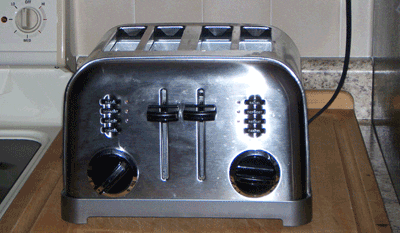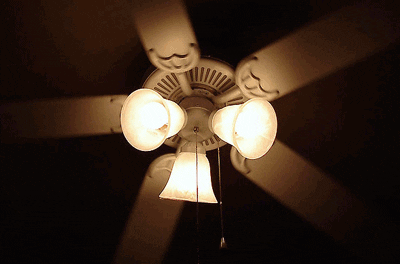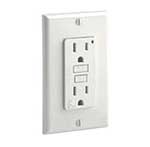Electrical Safety Tips Everyone Should Know to Protect Your Home or Business
At Electric Blue, Inc., it is our utmost concern that homeowners have a safe place to live.
Read the safety tips below from the National Fire Protection Agency to know what to look for. Electric Blue, Inc. recommends that you address all electrical issues as soon as possible. Schedule with us to provide a safety inspection of your home and call us to perform a full electrical inspection on a home you may be looking to purchase. There are many hidden electrical dangers, especially in older homes.
Topics covered on this page include:
Electrical Safety in the Home chevron_right
Warning Signs of Electrical Dangers chevron_right
Electrical Circuit Interrupters chevron_right
Tamper Resistant Electrical Receptacles chevron_right
Aging Electrical Systems and Safety chevron_right
Take a minute and familiarize yourself. It may save your life!
Electrical Safety in the Home
In 2007, an estimated 51,800 home structure fires reported to U.S. fire departments involved some type of electrical failure or malfunction as a factor contributing to ignition. These fires resulted in 451 civilian deaths, 1,641 civilian injuries, and $1.2 billion in direct property damage.
Safety Tips
- Replace or repair damaged or loose electrical cords.
- Avoid running extension cords across doorways or under carpets.
- In homes with small children, make sure your home has tamper-resistant (TR) receptacles.
- Consider having additional circuits or outlets added by a qualified electrician so you do not have to use extension cords.
- Follow the manufacturer’s instructions for plugging an appliance into a receptacle outlet.
- Avoid overloading outlets. Plug only one high-wattage appliance into each receptacle outlet at a time.
- If outlets or switches feel warm, have frequent problems with blowing fuses tripping circuits, or flickering or dimming lights, call a qualified electrician.
- Place lamps on level surfaces, away from things that can burn, and use bulbs that match the lamp’s recommended wattage.
- Make sure your home has ground fault circuit interrupters (GFCIs) in the kitchen, bathroom(s), laundry, basement, and outdoor areas.
- Arc-fault circuit interrupters (AFCIs) should be installed in your home to protect electrical outlets.
- By making sure that you have a thorough electrical inspection completed by a qualified electrician before buying, selling or remodeling a home, you can help ensure your home’s electrical system operates at the highest level of safety possible.
Facts & Figures
- 41% of home electrical failure fires involved electrical distribution or lighting equipment in 2003-2007.
- From 2003 – 2007, 53% of electrical failure home fires involved other known types of equipment. The leading other known types of equipment involved in home electrical failure fires are range, washers, dryers, and fans.
- U.S. fire departments responded to an estimated average of 25,200 reported U.S. non-confined home structure fires involving electrical distribution or lighting equipment in 2007. These fires resulted in 270 civilian fire deaths, 1,050 civilian fire injuries, and $663 million in direct property damage.
- Some type of electrical failure or malfunction was cited as a factor contributing to ignition for 72% of electrical distribution or lighting equipment home structure fires.
Further Information: – NFPA Electrical Safety in the Home
Warning Signs of Electrical Dangers
There are several ways you can assess your risk and make simple changes to reduce the hazards that may be present in an electrical system. By ensuring that your home undergoes a thorough electrical inspection completed by a qualified electrician before buying, selling or remodeling a home, you can make certain your home’s electrical system operates at the highest level of safety possible.

If a fuse opens or the circuit breaker is tripped, be sure to investigate the cause before replacing the fuse or resetting the breaker. If necessary, call a qualified electrician to investigate the cause.

Getting a shock when you touch appliances in your house can indicate a more serious problem. Be sure to unplug the appliance and discontinue use.

This can indicate arcing, smoldering, burning happening behind your outlets, damaged or improperly installed wiring in the outlet or a problem with the receptacle itself. Avoid using the outlet or switch and contact a qualified electrician as soon as possible.

This can indicate that the appliance is overheating or malfunctioning. Unplug the appliance or turn off the circuit breaker.

This sign could indicate a short in the wiring, dangerous arcing, or an over-extension of your home’s electrical systems. Contact a qualified electrician to discuss potential reasons for this problem and to have an inspection completed.
Electrical Circuit Interrupters
All AFCIs and GFCIs, whether circuit-type or breaker-type, should be installed by a qualified electrician. Test AFCIs and GFCIs after installation and once a month thereafter to make sure they are working properly. Replace defective AFCIs and GFCIs immediately. A defective device may create a false sense of security for those who do not know that it is non-functional. Choose AFCIs and GFCIs that carry the label of an independent testing laboratory and always follow the manufacturer’s instructions.
Protective devices capable of responding to overloads and short circuits, such as circuit breakers, have been available for many years. Newer technologies now provide enhanced protection from arcing or ground faults, which may prevent fires or shock.

When an electrical switch is opened or closed, an arc, or discharge of electricity across a circuit, occurs. Unintentional arcs can occur at loose connections or where wires or cords have been damaged. Such arcs can lead to high temperatures and sparking, possibly igniting combustibles. AFCIs (arc-fault circuit interrupters) protect against fire by continuously monitoring the electrical current in a circuit and shutting off the circuit when unintended arcing occurs. These devices are designed to discriminate between unintended arcing and the type of arcing that occurs when a switch is operated.

A ground fault is an unintentional electrical path between a source of electrical current and a grounded surface. Electrical shock can occur if a person comes into contact with an energized part. GFCIs (ground-fault circuit interrupters) can greatly reduce the risk of shock by immediately shutting off an electrical circuit when that circuit represents a shock hazard (i.e., a person comes in contact with a faulty appliance together with a grounded surface). GFCIs can be installed in a circuit breaker panelboard or directly in a receptacle outlet.
Facts and figures
- AFCI installation is required by the National Electrical Code® (NEC) in bedrooms of new residential construction (effective as of January 1, 2002). Bedrooms were selected as the first area in which to implement this requirement because of a history of fires there.
- GFCI installation is required by the NEC for receptacles in kitchens, bathrooms, outdoor areas, basements and garages in new residential construction because of a history of shock hazards in these areas.
AFCIs and the National Electrical Code (View an online version )
What are Arc-Fault Circuit Interrupters (AFCIs)?
The 2008 National Electrical Code® (NEC®) requirement for AFCI protection considerably expands this fire prevention technology to the majority of circuits installed in new and renovated homes. The type of AFCI currently available commercially is a next-generation circuit breaker that not only provides the conventional safety functions but its advanced design also rapidly detects potentially dangerous arcs and disconnects power in the circuit before a fire can start. Fire safety officials throughout the U.S. endorse AFCIs as a significant step forward in electrical fire safety.
Why should they be installed in homes?
AFCIs will save lives and make homes safer. According to the U.S. Fire Administration, each year, home electrical problems cause about 70,000 fires, resulting in 485 deaths and $868 million in property loss.
Why mandate AFCIs for newer homes when statistics show the majority of problems have occurred in older homes?
Fire safety officials recommend the use of AFCIs in all dwellings. While it is true that fire statistics in many cases are derived from older dwellings, damage to appliance cords or to wires hidden in a wall can occur regardless of the home’s age. In addition, incorrectly performed electrical installations can occur in both new and old homes. As technology evolves and the NEC is revised, the enhanced level of safety is typically required only in new construction that is subject to the latest adopted edition. Homes wired per the 2008 NEC will have the majority of their circuits protected by AFCIs for the life of the electrical system.
How do you know AFCIs will prevent fires and save lives?
Since 1999, AFCIs have been thoroughly field-tested. Underwriters Laboratories, the National Association of State Fire Marshals (NASFM), the U.S. Consumer Product Safety Commission, and many other experts have found AFCIs to be reliable and effective. By eliminating a significant source of electrically related fires, future statistics will demonstrate a reduction in fires of electrical origin.
Are AFCIs expensive?
The cost of the enhanced protection is directly related to the size of the dwelling and the number of circuits installed. Current retail prices of AFCI-type circuit breakers at several national building supply chains are in the range of $35 to $40 per unit. Even for larger homes with more circuits, the cost increase is insignificant compared to the total cost of the home, particularly when the increased level of safety is factored.
Do AFCIs interfere with smoke alarms and appliances, and trip unnecessarily?
AFCIs do not interfere with power supply reliability. These state-of-the-art devices identify problems that current circuit breakers are not designed to protect against, which can result in what appears to be an unexplained circuit breaker trip. By actually identifying these problems, residents are safer.
What is the NEC?
The NEC is the National Electrical Code. The NEC’s mission is to provide practical safeguards from the hazards that arise from using electricity. It is the most widely adopted safety code in the United States and the world, and it is the benchmark for safe electrical installations. The NEC is an evolving document, developed through an open consensus process. A new edition is issued every three years.
Tamper Resistant Electrical Receptacles
What are tamper-resistant electrical receptacles and what is the new requirement?
The 2008 National Electrical Code®(NEC®) will require new and renovated dwellings to have tamper-resistant (TR) receptacles. These receptacles have spring-loaded shutters that close off the contact openings, or slots, of the receptacles. When a plug is inserted into the receptacle, both springs are compressed and the shutters then open, allowing for the metal prongs to make contact to create an electrical circuit. Because both springs must be compressed at the same time, the shutters do not open when a child attempts to insert an object into only one contact opening, and there is no contact with electricity. Tamper-resistant receptacles are an important next step to making the home a safer place for children.
Why require tamper-resistant electrical receptacles?
Each year, approximately 2,400 children suffer severe shock and burns when they stick items into the slots of electrical receptacles. It is estimated that there are six to 12 child fatalities a year related to this.
If homeowners do not have children, are TR receptacles required?
Yes. Owners or tenants of homes and apartments change frequently. In addition, exposure to electrical shock and burn accidents is not limited to a child’s own home. Children visit the homes of relatives and friends who don’t have children of their own. This requirement ensures all new homes and apartments are safe for children, whether the home is their own or they are there temporarily.
Do TR receptacles require greater insertion strength than standard receptacles?
TR receptacles require comparable force to other receptacles. The insertion force may vary depending on the newness of the device to the shape or style of the plug being inserted.
Are TR receptacles costly?
No. The projected cost of a TR receptacle adds about $0.50 to the cost of an unprotected receptacle. Based on current statistics, the average home has about 75 receptacles resulting in an overall added cost of under $40. This amount may vary slightly based on the type and style of TR receptacle used. This minimal increase in cost buys a significant increase in electrical safety for children.
Shouldn’t people accept responsibility for their children and teach their children not to stick items in receptacles?
Accidents involving children and receptacles cannot be blamed entirely on poor parenting. They involve people who look away for a moment, only to face undue tragedy and pain as the result of a child’s curiosity. The NEC’s mission is to provide electrical safety in the home. TR receptacles are a simple and easy way to protect children from serious injuries that continue to happen every year.
Why are TR receptacles preferred over products such as receptacles with caps or sliding receptacle covers?
Receptacle caps may be lost and also may be a choking hazard for some ages. Children can learn to defeat sliding receptacle covers when they watch their parents. TR receptacles provide security against the insertion of objects other than cord plugs into the energized parts.
Aging Electrical Systems and Safety
Our lives depend on the safe use of electricity in our homes, but safety doesn’t just happen. Electricity continues to be a leading cause of home fires in the United States. In fact, according to the National Fire Protection Association, fires starting in electrical systems or lighting equipment damage 24,000 homes and kill 320 people each year. What some homeowners might think of as a “minor” electrical problem can lead to a dangerous or deadly fire. Your family and your home’s smoke alarms may not detect an electrical fire until the home is fully engulfed, giving you less time and fewer options for escape.
Older Homes and Electrical Hazards
Older homes can have serious hidden hazards that require inspection and repair by electrical experts. That’s why a recent, first-of-its-kind study from the Fire Protection Research Foundation carefully examined electrical risks and hazards present in older homes.
About the Study
The Residential Electrical System Aging Research Project was based on a thorough inspection of electrical systems and equipment in a sample of older homes across the country. This detailed assessment included a look within and behind the walls of each home, along with testing of key electrical system elements.
- The study closely examined electrical systems and devices from 30 homes in 10 states across the U.S.
- The majority of homes in this study ranged in age from 25 years to more than 90 years. Two of the homes were more than 100 years old.
- For each home, wiring and electrical systems, along with specific devices, were carefully inspected. After examining the homes, technicians also collected certain key electrical system elements (receptacles, service entrance panels, luminaries, junction boxes, etc.) and sent them to Underwriters Laboratories (UL) where they conducted a detailed laboratory analysis to determine how the elements performed after years of service in the field.
Findings from the Study
The results of this unique study show that the vast majority of potentially hazardous electrical conditions in these older homes were caused by:
- Failure to meet well-recognized, proven safety code provisions found in the National Electrical Code® (NEC®)
- Failure to properly install and maintain important electrical equipment. Homeowners need to remember that many hazards can exist in older homes.
- Some older equipment and wiring appeared well-maintained, performing effectively and safely.
- Other older homes had dangerous electrical conditions.
- There are some simple steps homeowners can take to protect their families and homes from electrical hazards.
- Homes should be inspected by a qualified electrician who is looking specifically at the electrical system. A thorough review of the electrical system, such as that described in the NFPA 73 Electrical Inspection Code for Existing Dwellings, is particularly important when purchasing an older home.
- When you have electrical work done, use a professional electrician.

